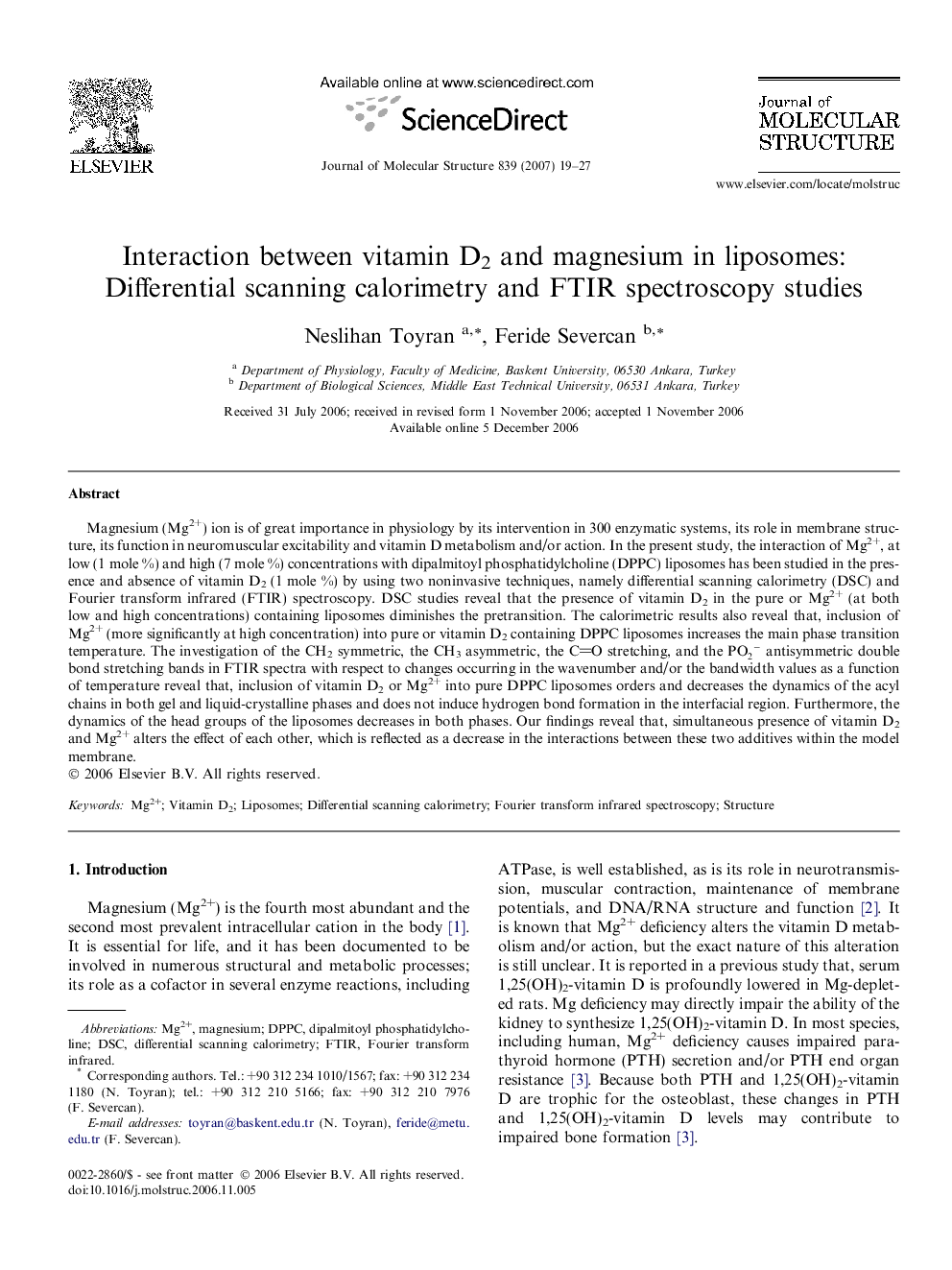| Article ID | Journal | Published Year | Pages | File Type |
|---|---|---|---|---|
| 1410859 | Journal of Molecular Structure | 2007 | 9 Pages |
Magnesium (Mg2+) ion is of great importance in physiology by its intervention in 300 enzymatic systems, its role in membrane structure, its function in neuromuscular excitability and vitamin D metabolism and/or action. In the present study, the interaction of Mg2+, at low (1 mole %) and high (7 mole %) concentrations with dipalmitoyl phosphatidylcholine (DPPC) liposomes has been studied in the presence and absence of vitamin D2 (1 mole %) by using two noninvasive techniques, namely differential scanning calorimetry (DSC) and Fourier transform infrared (FTIR) spectroscopy. DSC studies reveal that the presence of vitamin D2 in the pure or Mg2+ (at both low and high concentrations) containing liposomes diminishes the pretransition. The calorimetric results also reveal that, inclusion of Mg2+ (more significantly at high concentration) into pure or vitamin D2 containing DPPC liposomes increases the main phase transition temperature. The investigation of the CH2 symmetric, the CH3 asymmetric, the CO stretching, and the PO2- antisymmetric double bond stretching bands in FTIR spectra with respect to changes occurring in the wavenumber and/or the bandwidth values as a function of temperature reveal that, inclusion of vitamin D2 or Mg2+ into pure DPPC liposomes orders and decreases the dynamics of the acyl chains in both gel and liquid-crystalline phases and does not induce hydrogen bond formation in the interfacial region. Furthermore, the dynamics of the head groups of the liposomes decreases in both phases. Our findings reveal that, simultaneous presence of vitamin D2 and Mg2+ alters the effect of each other, which is reflected as a decrease in the interactions between these two additives within the model membrane.
